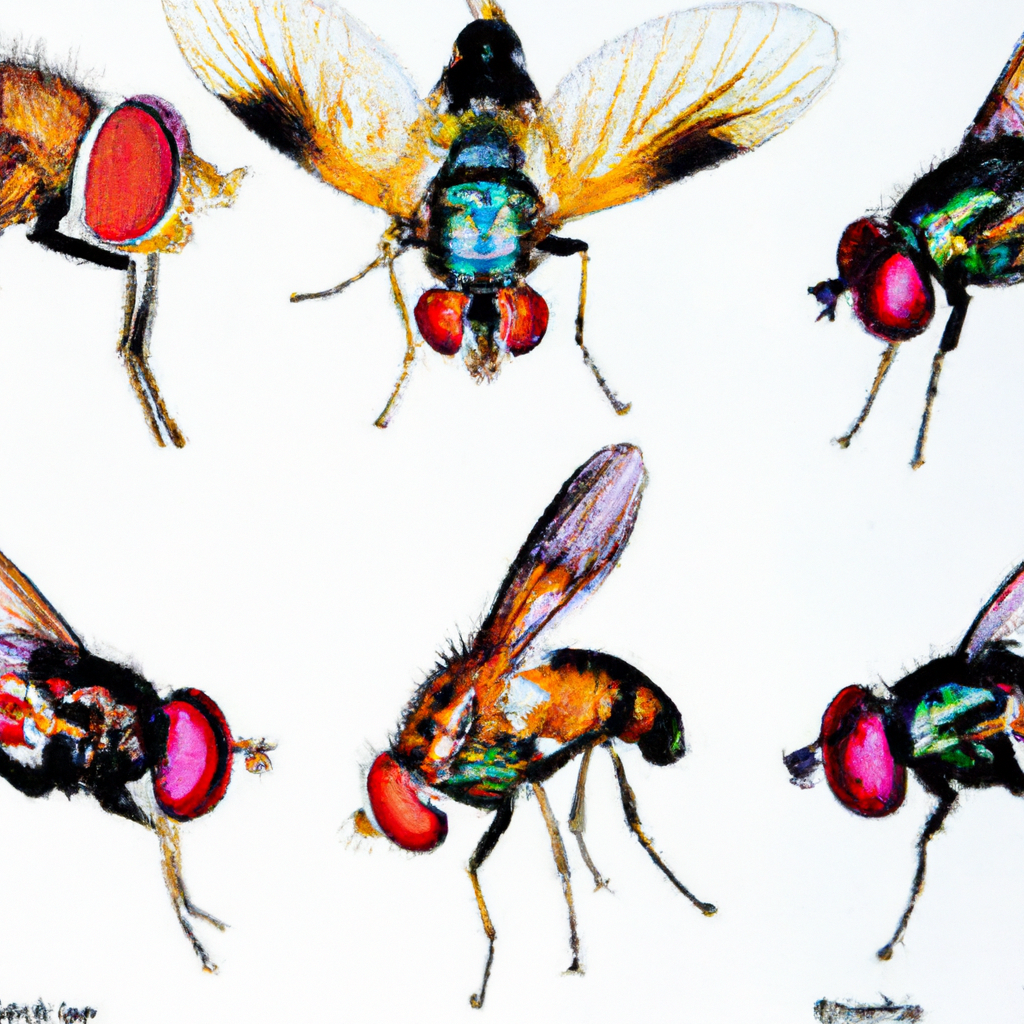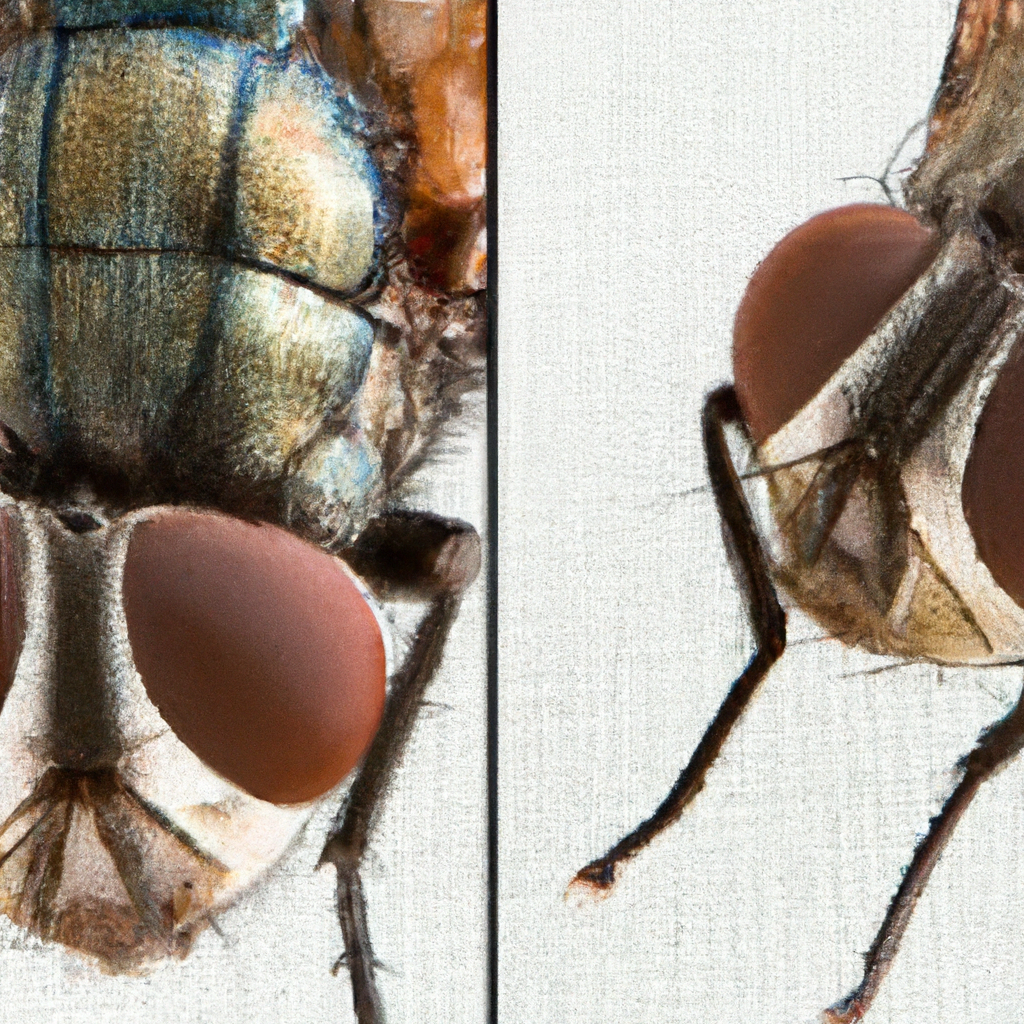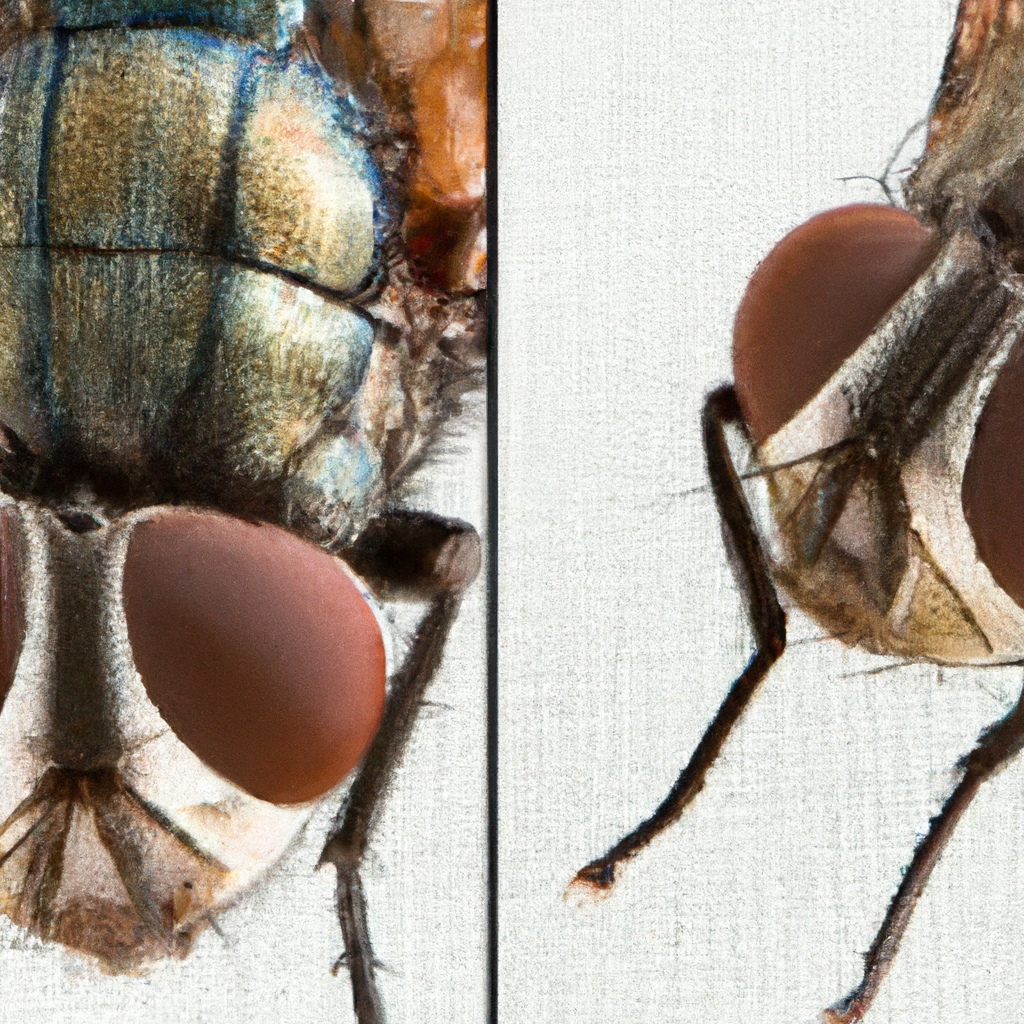So you’ve spotted a fly buzzing around your home or garden, and now you’re left wondering, “What kind of fly is it?” Don’t worry, because in this ultimate guide, we’ve got you covered. Whether it’s a common housefly, a fruit fly, or even a pesky horse fly, we’ll help you become an expert in identifying these winged creatures. From their distinct physical characteristics to their behavior and habitats, you’ll gain valuable insights that will enable you to tackle any fly-related situation with confidence. So, grab a magnifying glass and get ready to embark on your journey of fly identification mastery!
1. An Overview of Flies
Flies are small insects that are widely found all around the world. They belong to the order Diptera, which means “two wings” in Greek, referring to the two wings present on their bodies. Flies play an important role in various ecosystems as pollinators, decomposers, and as a food source for other animals. As a result, it is crucial to be able to identify different types of flies and understand their behaviors and habitats.
1.1 The Importance of Fly Identification
Fly identification is essential for several reasons. Firstly, it allows us to differentiate between harmless flies and potentially problematic ones, such as those that carry diseases. Being able to identify flies accurately helps us take appropriate actions to control their populations and prevent any negative impacts on human health or the environment.
1.2 Basic Fly Anatomy
Before discussing the various types of flies, it is important to have a basic understanding of their anatomy. Flies generally have a distinct head, thorax, and abdomen. They possess compound eyes, which consist of numerous individual lenses, enabling them to have a wide field of vision. Flies also have two antennae that help them sense their environment. Additionally, they have six legs and are equipped with appendages called halteres, which aid in balance and flight stability.
1.3 Life Cycle of Flies
Flies undergo a complete metamorphosis, meaning they have four distinct life stages: egg, larva, pupa, and adult. After mating, female flies typically lay eggs on suitable substrates, such as decaying organic matter or moist areas. These eggs hatch into larvae, commonly known as maggots, which then feed and grow. The larvae eventually enter the pupal stage, where they undergo further development. Finally, adult flies emerge from the pupae and continue the cycle. Understanding the different stages of the fly life cycle is crucial for accurate identification and effective control methods.
2. Different Types of Flies
Flies come in a diverse range of species, each with its own unique characteristics and behaviors. Here are some of the most common types of flies you may encounter:
2.1 House Flies
House flies (Musca domestica) are one of the most widespread and recognizable fly species. They often inhabit human dwellings and are known for their distinctive buzzing sound. House flies are grayish in color with four narrow stripes on their bodies. These flies are attracted to food, waste, and decaying organic matter, making them a nuisance in homes and establishments.
2.2 Fruit Flies
Fruit flies (Drosophila spp.) are small flies known for their affinity towards ripe and decaying fruits. They have a yellowish-brown body with red eyes and are relatively smaller in size compared to other fly species. Fruit flies are commonly found in households, grocery stores, and agricultural settings. These flies can multiply quickly, making them a challenge to control if not addressed promptly.
2.3 Blow Flies
Blow flies (Calliphoridae) are flies that are attracted to carcasses and decaying organic matter. They play a crucial role in the decomposition process and are often used by forensic scientists to estimate time of death in criminal investigations. Blow flies have metallic-looking bodies with vibrant colors, such as green, blue, or metallic bronze. Their distinctive appearance helps differentiate them from other fly species.
2.4 Horse Flies
Horse flies (Tabanidae) are large, biting flies known for their painful bites on livestock and humans alike. They are most active during the summer months and are typically found near bodies of water or in rural areas. Horse flies have stout bodies and large, compound eyes. They are strong fliers and can be quite elusive when trying to swat them away.
2.5 Deer Flies
Deer flies (Chrysops spp.) are another type of biting fly that primarily feeds on the blood of mammals, including deer, cattle, and humans. They are typically found in wooded or grassy areas and are most active during the daytime. Deer flies are smaller than horse flies but have similar characteristics, such as large compound eyes and a painful bite.
2.6 Hoverflies
Hoverflies (Syrphidae) are known for their unique ability to hover in the air, mimicking the appearance of bees or wasps. However, unlike bees or wasps, hoverflies do not possess stingers and are harmless. They serve as important pollinators, feeding on nectar and pollen. Hoverflies have a striped or spotted body pattern, often resembling bees or wasps. Their presence is beneficial for gardens and other flowering plants.
2.7 Cluster Flies
Cluster flies (Pollenia spp.) are known for their habit of overwintering in large numbers within buildings. They typically seek shelter in attics, basements, or other secluded areas during the colder months. Cluster flies are larger than house flies and often have a more sluggish flight. Their behavior can become problematic when large infestations occur inside structures.
2.8 Crane Flies
Crane flies (Tipulidae) are commonly mistaken for large mosquitoes, though they are not blood feeders. They have slender bodies and extremely long legs, which earned them the nickname “daddy longlegs.” Crane flies are often found in moist areas, such as gardens or near bodies of water. While their larvae may cause minor damage to plants, adult crane flies are harmless and only live for a short period.
2.9 Drain Flies
Drain flies (Psychodidae) are small, moth-like flies that are commonly found near drains and other damp environments. They have fuzzy bodies and are known for their erratic flying patterns. Drain flies are not known to transmit diseases but can become a nuisance in households if their populations become excessive. Proper sanitation and eliminating breeding sites are key to managing drain fly infestations.
2.10 Mosquitoes
Mosquitoes (Culicidae) are notorious insects known for their itchy bites and ability to transmit diseases, such as malaria, dengue fever, and West Nile virus. They have slender bodies with elongated mouthparts called proboscis, which they use to extract blood from their hosts. Mosquitoes are typically found in areas with standing water, where they lay their eggs. Avoiding mosquito bites and implementing mosquito control measures are important for disease prevention.

3. Identifying Flies by Physical Characteristics
When it comes to identifying flies accurately, observing their physical characteristics is crucial. Here are some key features to look for:
3.1 Size and Body Shape
Flies come in various sizes and body shapes. Some flies, like house flies, are medium-sized with a compact and robust body. Others, such as crane flies, have elongated bodies and long, delicate legs. Paying attention to the size and body shape of a fly can provide valuable clues for identification purposes.
3.2 Wing Structure and Veination
The structure of a fly’s wings can provide important information for identification. For example, house flies have clear wings with distinct veins running through them. On the other hand, hoverflies often have wings with distinct patterns or bands of color. Observing the wings and their veination can help narrow down the possibilities and assist in accurate identification.
3.3 Coloring and Patterns
Coloration and patterns on a fly’s body are highly variable and can vary between different species. For instance, fruit flies have a yellowish-tinged body and distinctive red eyes, while blow flies exhibit vibrant metallic colors. Some flies have stripes, spots, or other patterns that can aid in differentiating them from similar-looking species.
3.4 Mouthparts and Feeding Habits
The type of mouthparts a fly possesses can indicate its feeding habits. For example, house flies have sponge-like mouthparts used for sucking up liquids, while horse flies have piercing mouthparts for drawing blood. By carefully examining a fly’s mouthparts, you can gain insights into its feeding behavior, which can be helpful in identification.
4. Recognizing Fly Behavior
In addition to physical characteristics, observing a fly’s behavior can further assist in identification. Here are some behaviors to watch for:
4.1 Flying Patterns
Different fly species exhibit distinct flying patterns. House flies, for example, tend to fly in straight lines or small loops, while hoverflies have a characteristic hovering flight. Observing a fly’s flight patterns, whether it is erratic, swift, or leisurely, can provide valuable information for identification and understanding its ecological role.
4.2 Resting Positions
Flies have specific resting positions when they are not in flight. Some flies, like house flies, rest with their wings folded flat over their backs. Others, such as crane flies, hold their wings in a V-shape when at rest. These resting positions, in combination with other physical characteristics, can help narrow down the possibilities when trying to identify a fly species.
4.3 Feeding Habits
Observing a fly’s feeding habits can provide insights into its ecological niche. House flies are typically found near food sources, while fruit flies are attracted to ripe or fermenting fruit. Some species, like deer flies and horse flies, feed on the blood of mammals. Understanding a fly’s feeding preferences can aid in both identification and implementing effective control measures.
4.4 Breeding Habits
Knowing where and how flies breed can offer valuable information for identification purposes. Many fly species have specific breeding habitats, such as stagnant water for mosquitoes or decaying organic matter for blow flies. Understanding a fly’s breeding habits can help locate their source and prevent further infestations.

5. Using Visual Identification Tools
Several tools and resources can assist in accurately identifying flies. Here are some common visual identification methods:
5.1 Field Guides and Reference Books
Field guides and reference books specifically dedicated to fly identification can be valuable resources. These guides often contain detailed descriptions, photographs, and illustrations of different fly species, as well as information on their habitats and behaviors. Having a reliable field guide on hand can greatly aid in fly identification while out in nature.
5.2 Online Identification Resources
The internet offers a wealth of online resources for identifying flies. Numerous websites provide extensive databases with photos, descriptions, and even interactive keys for fly identification. These resources can be accessed from anywhere, making it convenient to identify flies on the spot or research further information about specific species.
5.3 Smartphone Apps
Advancements in technology have given rise to smartphone apps specifically designed for insect identification, including flies. These apps often integrate image recognition software, allowing users to take a photo of a fly and receive immediate identification results. Some apps also provide additional information on the fly’s habitat, behavior, and ecological significance.
5.4 Microscopic Examination
In certain cases, microscopic examination may be necessary for precise fly identification. This method requires capturing a specimen and carefully examining its physical characteristics, such as wing venation, mouthparts, or genitalia, under a microscope. Microscopic examination is commonly employed by entomologists and specialists for accurate species identification.
6. Understanding Fly Habitats
Flies inhabit a wide range of habitats, from indoor spaces to outdoor environments. Understanding their preferred habitats is crucial for effective identification and management. Here are some common fly habitats to be aware of:
6.1 Indoor Habitats
Many fly species thrive in indoor environments, especially those associated with human activities. House flies, fruit flies, and drain flies are commonly found indoors where there is a ready supply of food, moisture, and breeding substrates. Proper sanitation, regular maintenance, and eliminating sources of attraction are key to minimizing indoor fly populations.
6.2 Outdoor Habitats
Outdoor habitats for flies can vary greatly depending on the species. Some prefer agricultural areas, such as crop fields or livestock farms, while others thrive in natural environments like forests or wetlands. Understanding the specific outdoor habitats preferred by different fly species can aid in their identification and facilitate appropriate pest management strategies.
6.3 Natural Environments
Flies are integral components of natural ecosystems. They play essential roles as pollinators, decomposers, and as a food source for other organisms. Many fly species are found in meadows, gardens, or near bodies of water. Recognizing the diverse natural environments that flies inhabit is crucial for appreciating their ecological importance and promoting their conservation.
7. Seasonal Appearance of Flies
Understanding the seasonal patterns of fly species can offer additional insights into their identification and behavior. Here are some key points to consider:
7.1 Flies by Season
Certain fly species have specific seasons in which they are most active or abundant. For instance, house flies tend to be more prevalent during warmer months, while cluster flies typically seek shelter indoors during the colder months. Being aware of the seasonal patterns for different fly species can aid in identifying them and implementing appropriate control measures.
7.2 Seasonal Fly Activity
Flies may exhibit different behaviors and preferences throughout the year due to seasonal changes. For example, mosquitoes are more active during spring and summer, coinciding with periods of higher temperatures and increased precipitation. Understanding the seasonal activity patterns of flies can help predict their behavior and implement targeted management strategies.
8. Tips for Accurate Fly Identification
Identifying flies accurately can sometimes be challenging, especially with the vast number of species. Here are some tips to help improve identification accuracy:
8.1 Collecting and Preserving Specimens
When encountering an unfamiliar fly species, collecting a specimen for closer examination can be helpful. Use a delicate technique to capture the fly, ensuring minimal damage to its body. Preserve the specimen properly, either by pinning or placing it in a collection vial with appropriate preservation techniques. This allows for a more detailed examination and consultation with experts if necessary.
8.2 Noting Environmental Clues
Pay attention to the environmental context when identifying a fly. Consider factors such as location, habitat, and season, as these can greatly narrow down the possibilities. Noting any associations with specific plants, animal hosts, or breeding substrates can further assist in identifying the fly accurately.
8.3 Seeking Expert Assistance
When in doubt, it is always advisable to consult with experts or entomologists specializing in fly identification. They have extensive knowledge and experience in distinguishing different fly species. Local universities, agricultural extension offices, or professional pest control services may be able to provide guidance and expertise for accurate identification.
9. Common Fly Look-Alikes
Sometimes, other insects can resemble flies, leading to misidentifications. Here are a few examples:
9.1 Other Insects That Resemble Flies
Beetles, true bugs, and even some bees and wasps may exhibit similar body shapes or flight patterns that can be mistaken for flies. Ladybugs, for instance, have a similar compact body shape to some flies, while certain wasps might mimic the appearance and flight of hoverflies. Being aware of these resemblances can enhance fly identification accuracy.
10. Conclusion
Identifying flies can be both fascinating and important for various purposes, from pest management to understanding ecosystem dynamics. By familiarizing yourself with different fly species, their physical characteristics, behaviors, and habitats, you can become a more knowledgeable observer of the natural world. Remember to rely on reliable resources, seek expert assistance if needed, and always appreciate the diverse roles that flies play in our environment. Happy fly identification!




